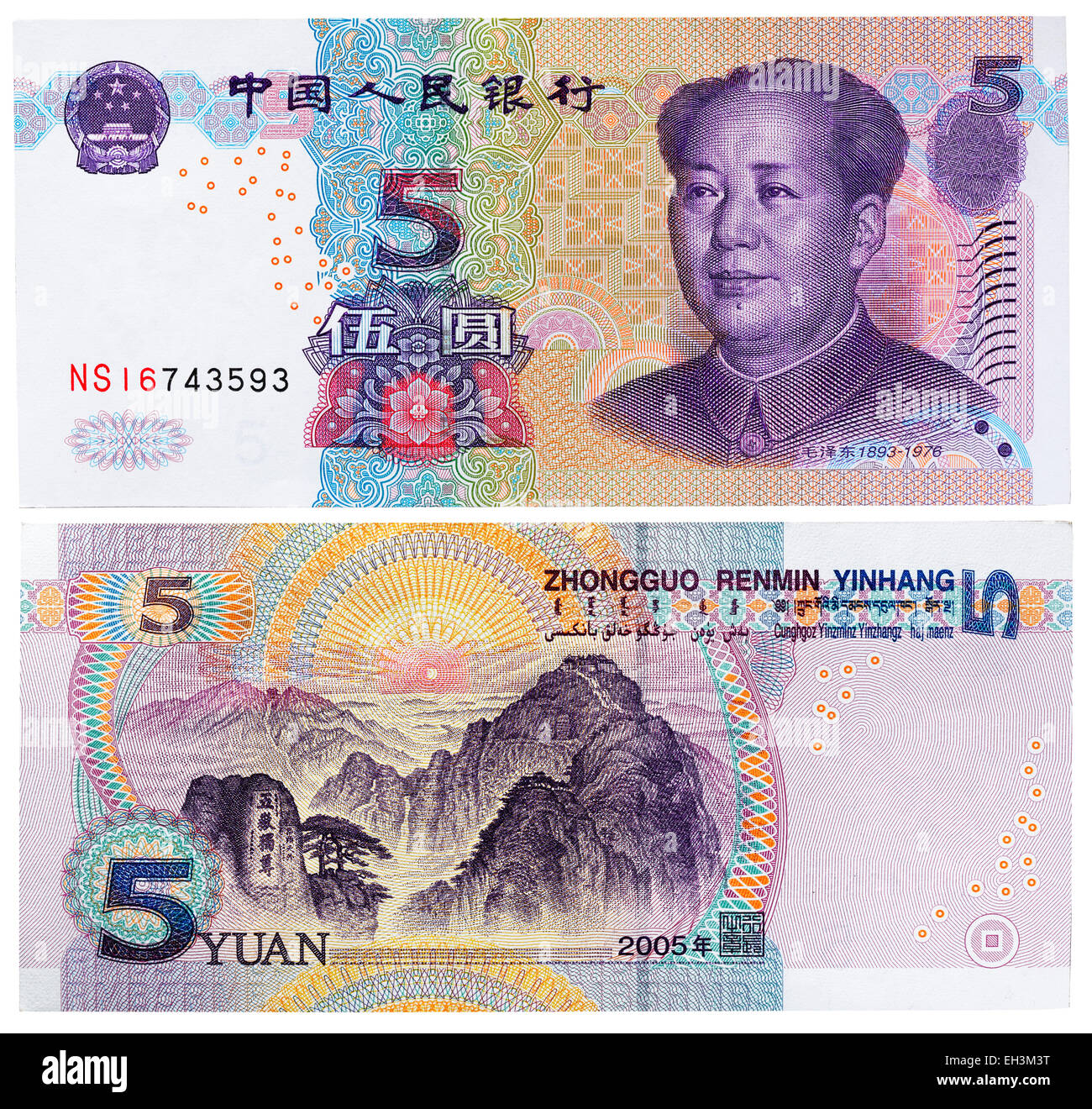
5 yuan banknote, Mao Zedong, China, 2005 Stock Photo Alamy
Terminology The ISO code for the renminbi is CNY, the PRC's country code (CN) plus "Y" from "yuan". [13] Hong Kong markets that trade renminbi at free-floating rates use the unofficial code CNH. This is to distinguish the rates from those fixed by Chinese central banks on the mainland. [14]
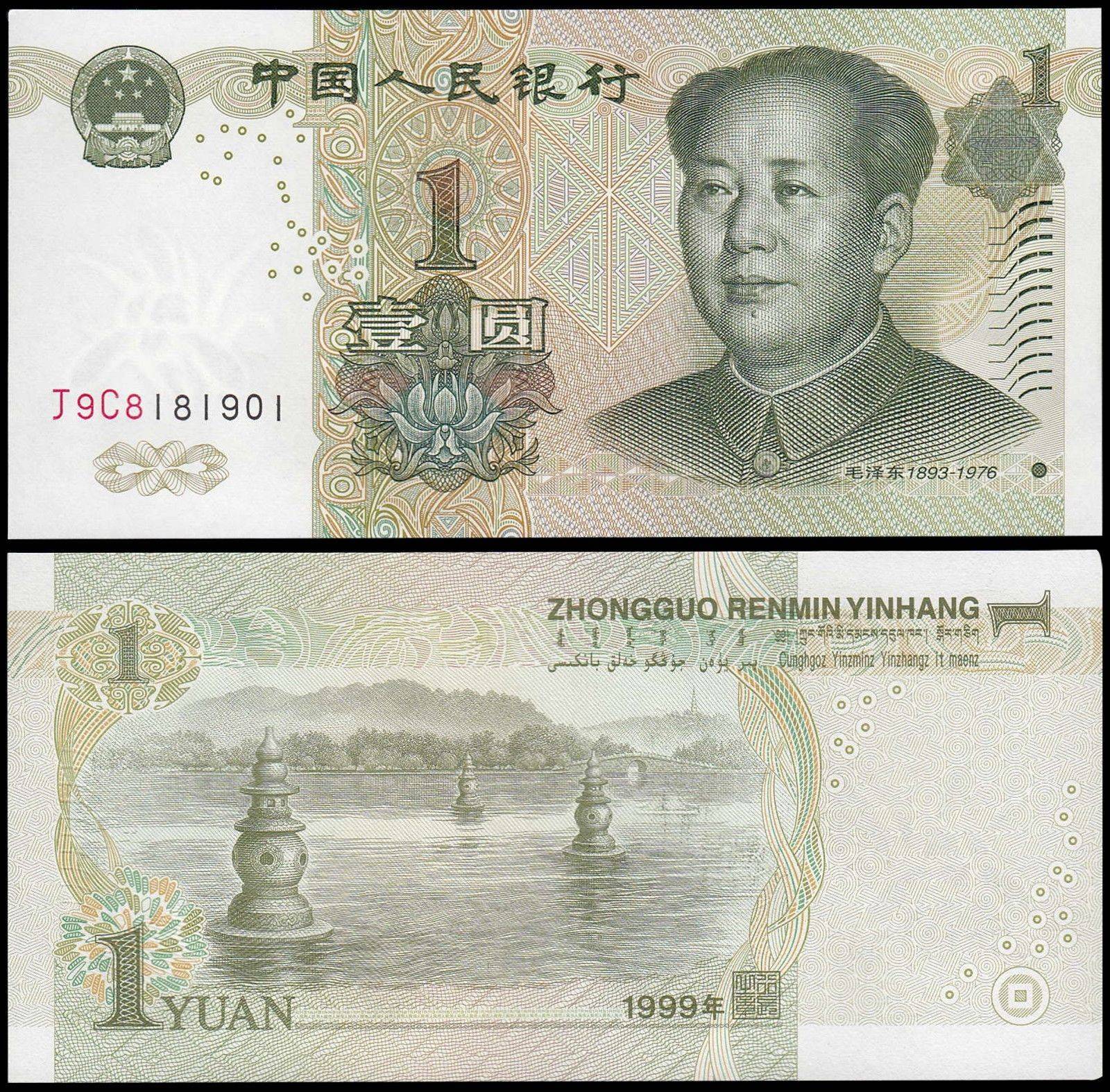
China 1 Yuan, 1999, P895, UNC
The Renminbi (RMB) is the official name of China's currency. The principal unit of RMB is called the Chinese Yuan (CNY). CNY is the official ISO 4217 abbreviation for China's currency..

Lot 1940 Bank of China 10 Yuan Currency Note
In Chinese, there are three common names and two symbols in regular use. The official name for Chinese currency is Renminbi, which literally translates to People's Currency and is abbreviated to RMB. The most widespread international usage is yuan, which is abbreviated to CNY. You can write either CNY 1,000 or RMB 1,000.

China 100 Yuan Banknote, 2001, P1991, UNC
As the Chinese New Year of the Loong (or Chinese dragon) approaches, pre-orders for China's 2024 New Year commemorative coins and commemorative banknotes opened on January 3 at 10 p.m. Beijing Time. According to feedback from netizens, the web pages of several banks were inaccessible due to high traffic, causing issues such as lag, delayed.

1936 Central Bank of China 10 Yuan National Currency Bank Note
The History of Chinese Money From Shells to Silver The 5 jiao note celebrates the diverse heritage of China's people The earliest form of Chinese money was shells (hence the use of the shell character in many other characters related to value, money and wealth). Money shells were later bronzed.
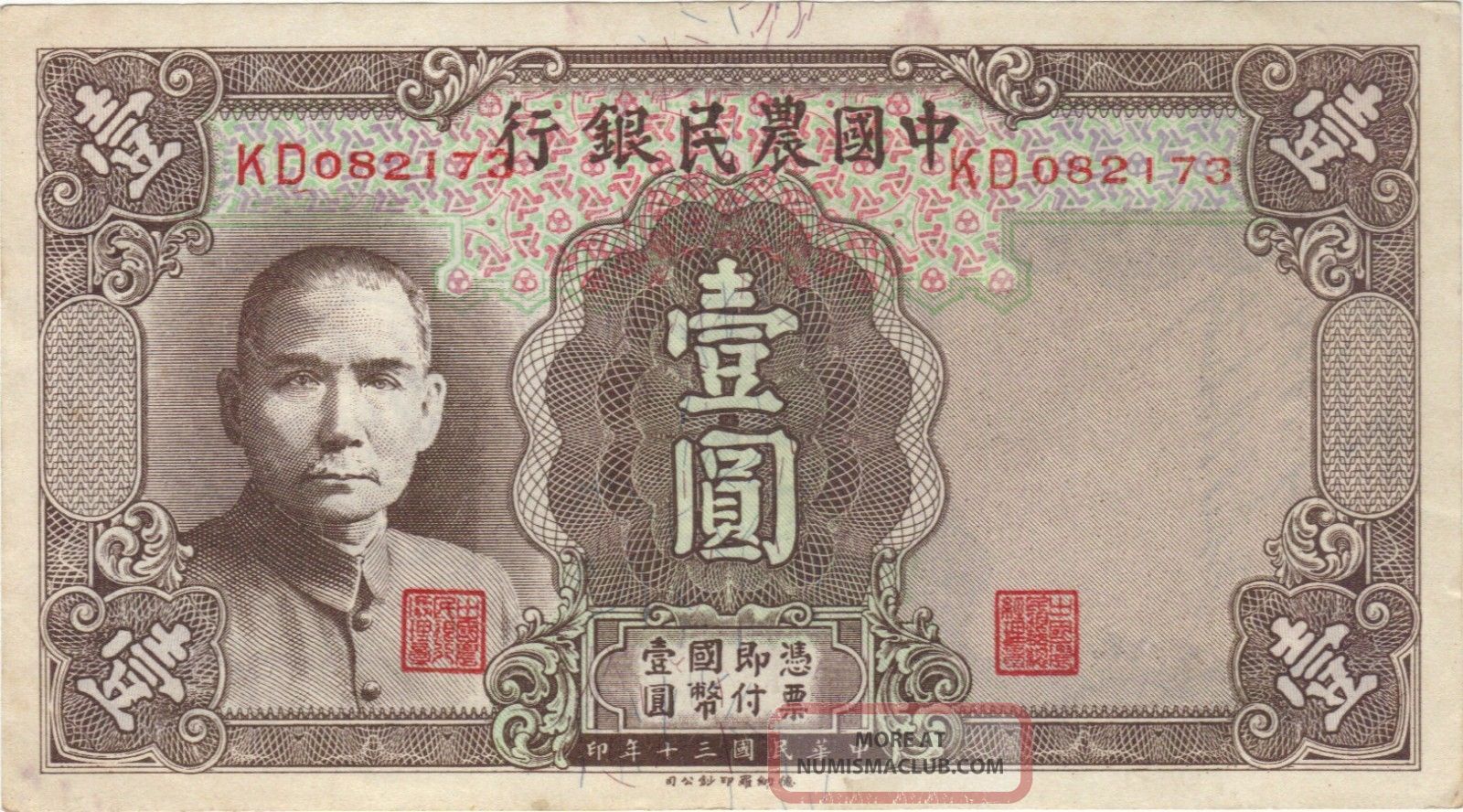
1941 1 Yuan Bank Of China Chinese Currency Banknote Note Money Bill
The obverse of the 1996-type 1-yuan note is a portrait of two women from two minorities, and the reverse is the Great Wall. The obverse of the 1999-type 1-yuan note is a portrait of former Chinese leader Mao Zedong, while the reverse is the Xihu Lake in the southeastern Chinese city Hangzhou. The 2-yuan banknote is in green.

100 Yuan People's Republic of China Numista
renminbi, (Chinese: "people's money") also called yuan, monetary unit of China. One renminbi (yuan) is divided into 100 fen or 10 jiao. The People's Bank of China has exclusive authority to issue currency. Banknotes are issued in denominations from 1 fen to 100 renminbi. The obverse of some banknotes contains images of communist leaders.
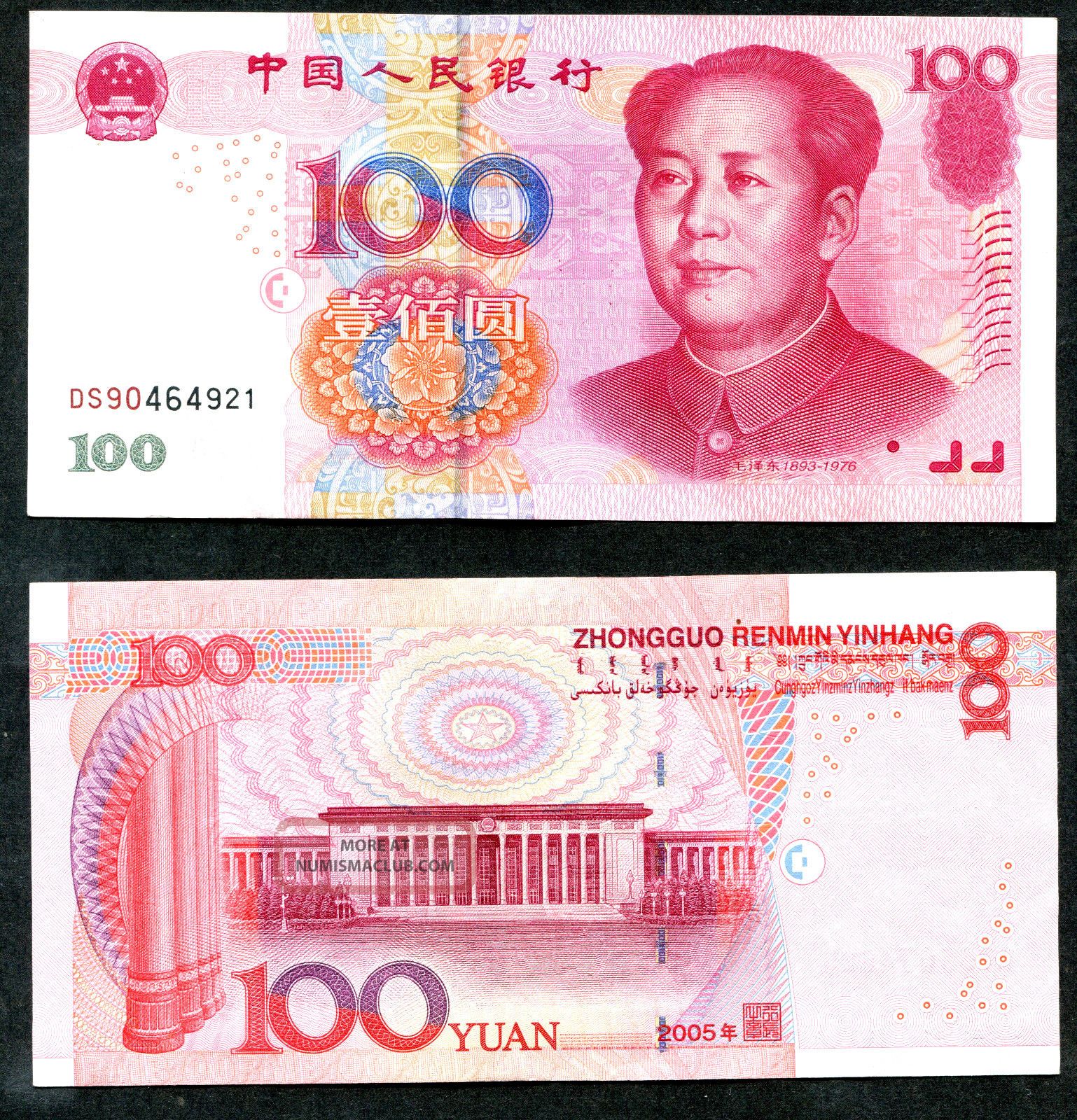
100 Chinese Yuan China Banknote Fresh Uncirculated
A selection of bank notes The official Chinese currency is the China yuan (CNY) or the renminbi (RMB). This translates as 'the People's money'. The basic unit is the yuan, and you will most commonly see it signified with the Chinese character 元 in shops. For ballpark calculations, reckon on six RMB to one United States dollar.
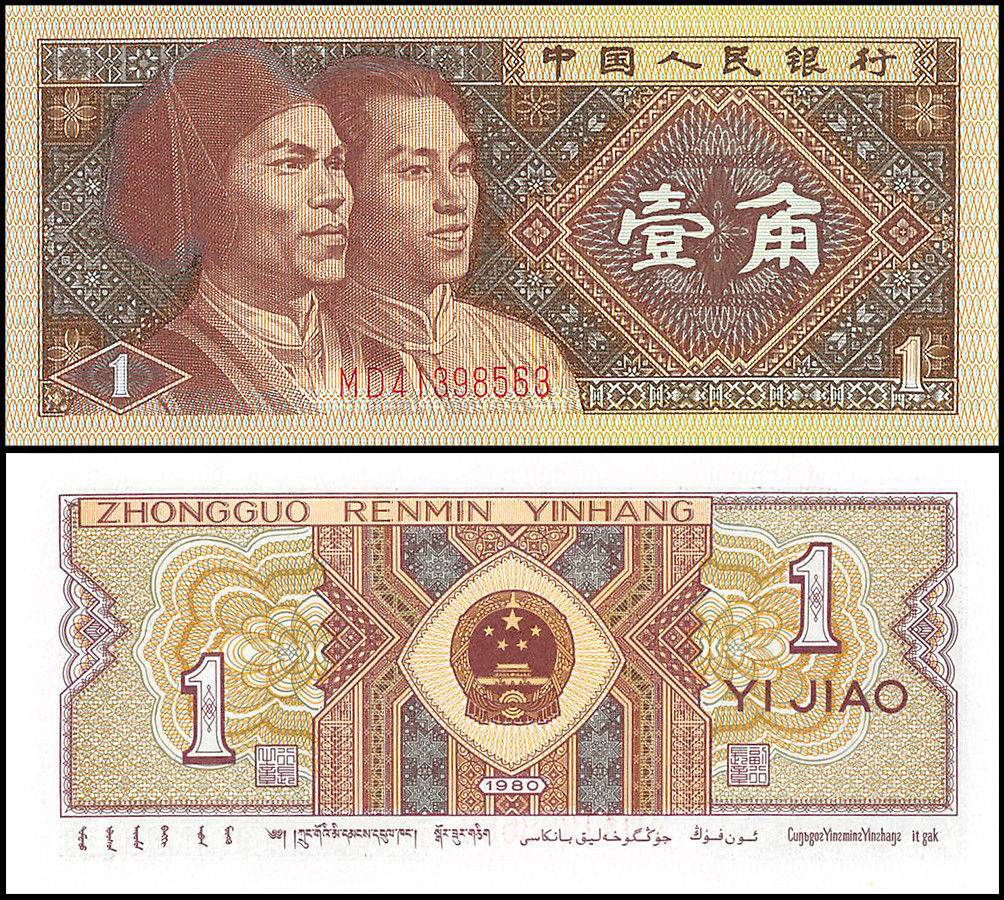
China 1 Jiao, 1980, P881, UNC
As the Chinese New Year draws near, the Hong Kong Monetary Authority (HKMA) and the three note-issuing banks (The Hongkong and Shanghai Banking Corporation Limited, Standard Chartered Bank (Hong Kong) Limited and Bank of China (Hong Kong) Limited) today (4 January) announced that new notes and good-as-new notes, i.e. used notes which are in good condition and suitable for use as lai-see, will.
China 100 Yuan Renminbi banknote 1980World Banknotes & Coins Pictures
The fifth series of the renminbi is the current coin and banknote series of the Chinese currency, the renminbi. They were progressively introduced since 1999 and consist of ¥0.1, ¥0.5, and ¥1 coins, and ¥1, ¥5, ¥10, ¥20, ¥50, ¥100 notes. The ¥20 banknote is a new denomination, and was added in this series.
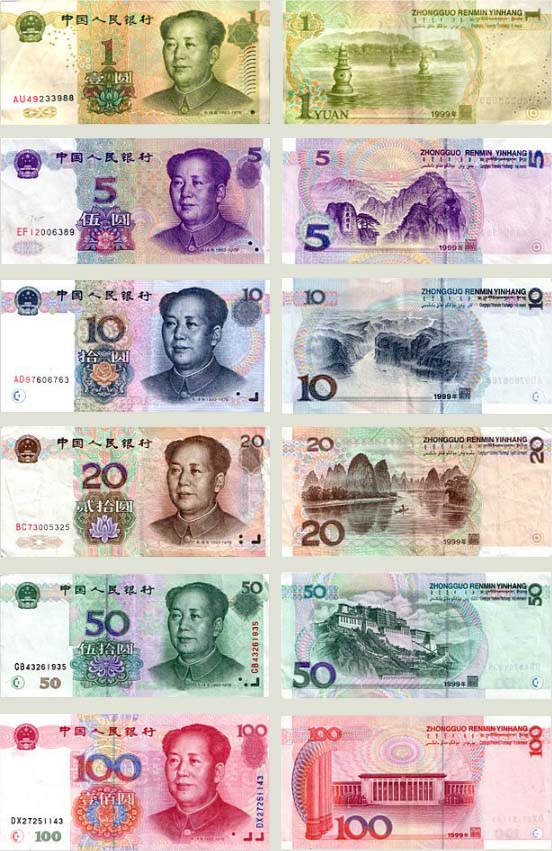
Chinese Currency Travel Preparation The China Guide
April 3, 2023 By Josh Summers What is the Chinese currency? As you prepare for your visit to China, this guide will provide a simple introduction to the Chinese renminbi and answer questions related to exchanging money and avoiding fake bank notes. China's currency can seem incredibly confusing to foreigners.

Old Chinese Money
A yuan (Chinese: 圓/元; pinyin: yuán) is also known colloquially as a kuai (simplified Chinese: 块; traditional Chinese: 塊; pinyin: kuài; lit. 'lump'; originally a lump of silver). One yuan is divided into 10 jiao (Chinese: 角; pinyin: jiǎo; lit. 'corner') or colloquially mao (Chinese: 毛; pinyin: máo; lit. 'feather').

1941 The Central Bank of China 100 Yuan Note Property Room
Chinese Currency Written by Sally Guo Updated Jul. 4, 2022 The official currency in China is the Renminbi (RMB or CNY) or in Chinese "Ren-min-bi". It translates as "the people's money". The basic unit is the yuan (also known as "kuai"). It is used to express all quantities including prices in shops etc.

1936 Central Bank of China 10 Yuan National Currency Bank Note
US office owners face $117bn wall of debt repayments; Private equity groups hunt for new exit strategies as cash piles up; Business trends, people to watch and risks on the horizon in 2024
/GettyImages-144756103-58b62b2d5f9b5860467141b8.jpg)
A Brief History of the Chinese Yuan Currency
Prior to market opening, the People's Bank of China (PBOC) set the midpoint rate , around which the yuan is allowed to trade in a 2% band, at 7.0770 per dollar, 57 pips firmer than the previous.

Vintage Chinese Paper Money Currency Very hard China Note Property Room
CNY: In currencies, this is the abbreviation for the China Yuan Renminbi.